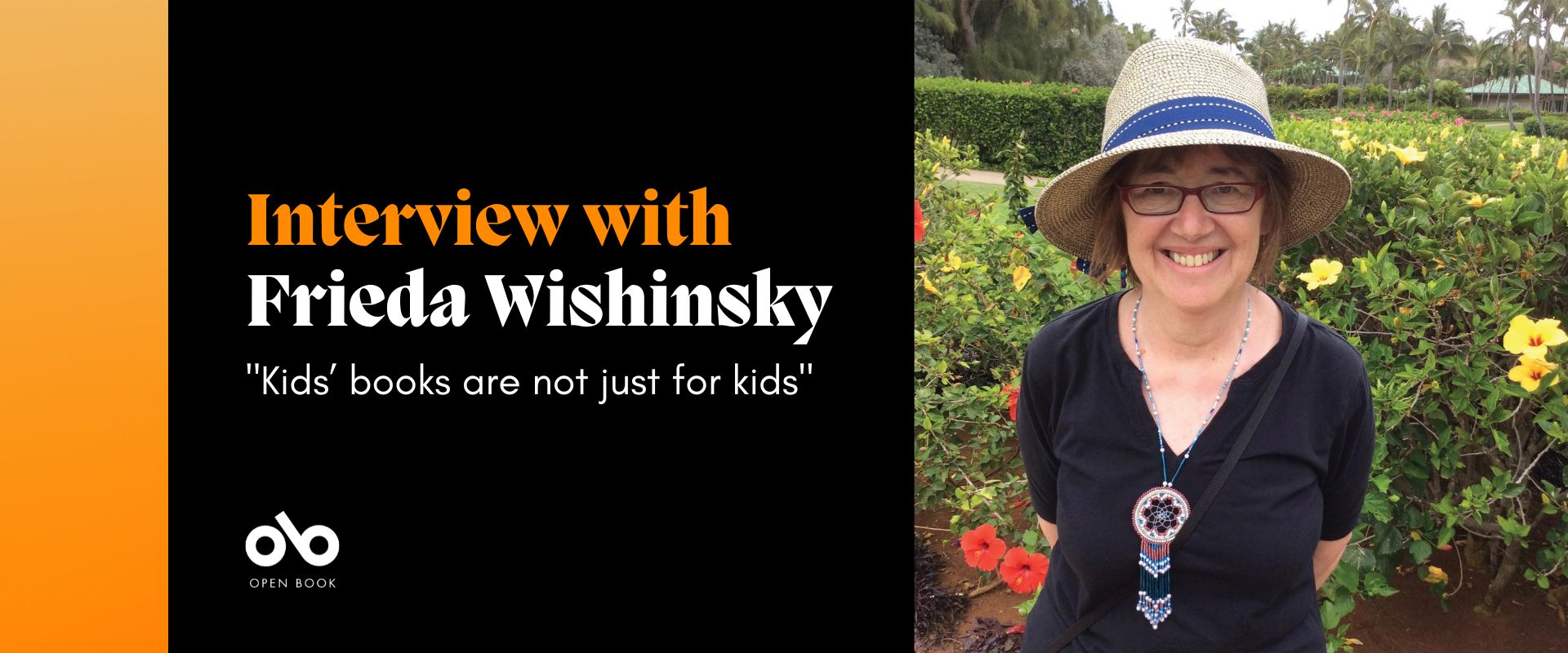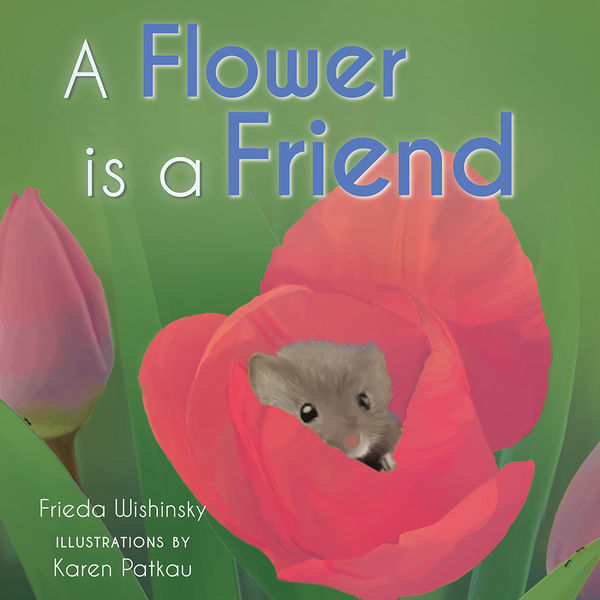Frieda Wishinsky Uses the Hidden Secrets of Gardens to Explore Community in Her New Picture Book
Plenty of people enjoy the beauty of a flower in a garden, but when was the last time you asked yourself what a flower was actually doing? In Frieda Wishinsky's A Flower is a Friend (Pajama Press, illustrated by Karen Patkau), Wishinsky reminds us that a flower is not just a static bit of pleasant scenery – that they do, and are, many things to many different creatures. Wishinsky is the acclaimed author of more than 70 books, both trade and educational, that have been translated into eight languages and published around the world.
In A Flower is a Friend, we see a bumblebee, a frog, a hummingbird, and many others interact with the flowers in the garden ecosystem Wishinsky creates, which acts as a bustling community where processes invisible to human eyes are whirring away.
Gentle and enchanting for readers young and old, Wishinsky's text focuses on a pared-down approach, with just a few, well-chosen words on each page creating a narrative in which the generosity and sharing in a flower's life cycle (and the generosity it benefits from, courtesy of other creatures) offers a community-minded approach. It's a wise and timely reminder that we too can be friends to flowers, and to the natural world as a whole.
Today for our Kids Club interview series, we're speaking with Frieda about A Flower is a Friend. She tells us about a moment of beauty with a butterfly and a zinnia that first sparked the idea for the book, how she copes when she "hit[s] a wall" in the writing process, and why she is a firm believer that "kids’ books are not just for kids".
Open Book:
Tell us about your new book and how it came to be.
Frieda Wishinsky:
I love gardens and I created a lovely, no grass urban garden in my North York Toronto home. A few years ago, I bought a packet of mixed annual zinnia seeds and placed them in my garden. To my delight they grew tall and beautiful. I loved their complex shape and vibrant colours, and I loved how butterflies were attracted to the zinnia’s nectar.
One day I watched a monarch butterfly drink in the nectar of a red zinnia. It flittered away and returned over and over. As it did, I took picture after picture. I also realized that the monarch and zinnia had a powerful connection. That led me to reflect on the bond between flowers and creatures.
Soon after an idea for a picture book blossomed and grew into A Flower is a Friend.
OB:
Is there a message you hope kids might take away from reading your book?
FW:
I hope the underlying message is to pay attention to all that’s around you and to notice how everything is connected. People are connected to each other and to flowers, trees, and creatures. There’s so much to see and appreciate. But most of all, we all need each other, the way the monarch needs the zinnia, and the zinnia needs the monarch.
Your CanLit News
Subscribe to Open Book’s newsletter to get local book events, literary content, writing tips, and more in your inbox
OB:
What is the strangest or most memorable moment or experience during the writing process for you?
FW:
Getting the idea is probably the most exciting, especially if you know that your idea might be unique or it’s a theme that hasn’t been tapped into before in quite the same way. The “aha” moments along the way are very satisfying. What I mean by that is the perfect ending or a good line. And I love revision. Revision is fine tuning, getting all the parts to fit like a glove or a poem.
OB:
How do you cope with setbacks or tough points during the writing process? Do you have any strategies that are your go-to responses to difficult points in the process?
FW:
There are always moments when I (like many writers) hit a wall. I can’t think what to write next. I’ve learned that that’s when I need to stop and do something else. I take a walk. I clean something. I cook or bake. I have a conversation with someone. And then I go back and something magical often happens. I know what to write next or what direction to take next. I’m also one of those writers who likes to talk to a kindred spirit about what I’m writing or thinking about writing. It helps me define the story.
OB:
Do you feel like there are any misconceptions about writing for young people? What do you wish people knew about what you do?
FW:
I believe that kids’ books are not just for kids. I reread my favourite picture books, nonfiction, middle grade, or novel, often many times. I share these favourites with kids and adults. The best kids’ books are for everyone. They get to the heart of a feeling or experience. The best non-fiction for kids is where I go to research first because it’s clear and gets to the core of the subject.
OB:
What's your favourite part of the life cycle of a book? The inspiration, writing the first draft, revision, the editorial relationship, promotion and discussing the book, or something else altogether? What's the toughest part?
FW:
The best part for me is when I first get a good idea. The next best is when an editor or publisher says, “I want to publish your book”. I like revision and polishing the manuscript. The hardest part is waiting to see if reviewers like it and if it will sell well. That part is out of my control.
OB:
What are you working on now?
FW:
I’m one of those writers who works on multiple projects at the same time. I’m working on a nonfiction middle grade about greenspace. I’m about to revise a book on space. I’m also toying with a bunch of picture book ideas. Many of my stories are about the natural world, being aware of what’s around, dealing with bullies and the power of friendship. I revisit those themes in different ways. I also like humour and I’m going to write an article about what makes something funny. It’s a tricky topic to define in words!
_______________________________________________
Frieda Wishinsky grew up in New York City, where she played in local parks and frequented the local candy store. After earning her BA in international relations and her Master of Science in special education, Frieda began to teach…and then to write. Her first title, Oonga Boonga, was an American Booksellers’ Pick of the List. Since then, she has grown a magical garden and published more than seventy books, including her bestselling biography of Frederick Law Olmsted, The Man Who made Parks. Frieda has earned many starred reviews and awards, including the Print Braille Book of the Year and the Marilyn Baillie Picture Book Award. Today lives in Toronto, where she still loves exploring parks and gardens.





